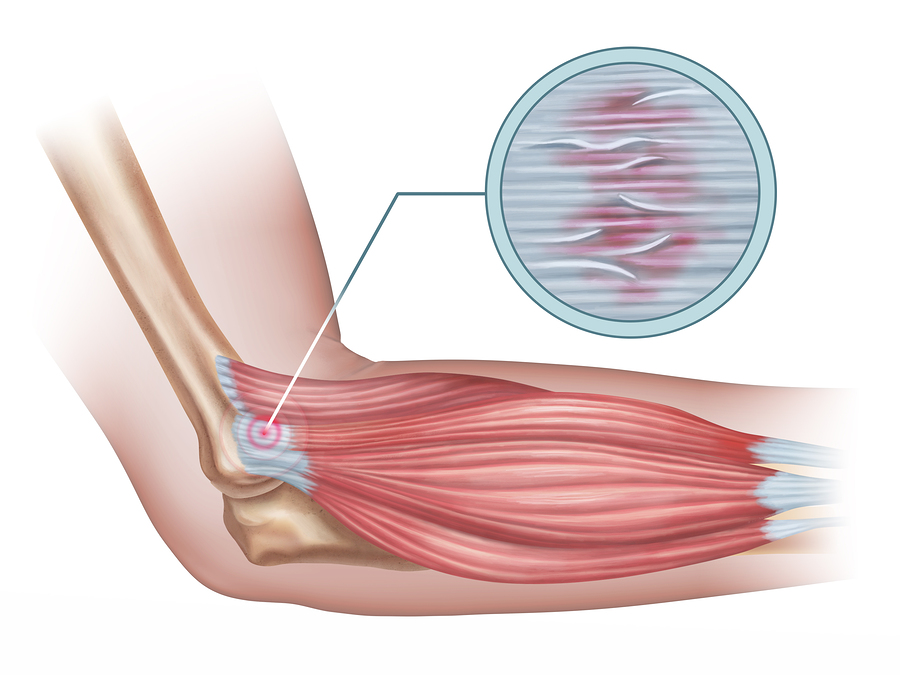The Benefits of Massage for Tendonitis
May 16th, 2020
Massage Can Restore Mobility & Relieve Pain
Tendonitis is an unpleasant inflammatory condition that affects most people at some point in their lives. Tennis elbow and golfer’s elbow are well known examples of tendonitis but contrary to popular belief, you don’t need to play tennis or golf to suffer from these.
Whether tendonitis is caused by a sports injury, the overuse of a muscle, or poor muscle strength, it can be quite painful and difficult to diagnose.
In this article, I will discuss the principal causes of tendonitis, where it commonly occurs, and how it is treatable with massage, an effective technique called frictioning, and remedial exercises.
Tendonitis is the inflammation of a tendon, which is a thick fibrous band that attaches muscles to bones. When clients come in seeking treatment for an acute burning pain near a joint, that worsens with activity, I begin an assessment with tendonitis in mind.
The most common cause is overuse through repetitive actions. These can occur at work (computer desk, assembly line, construction) playing an instrument, recreational sports, outdoor seasonal work, and even playing video games. Through overuse, the tendon is repeatedly pulled, causing an inflammatory response.
The rotator cuff of the shoulder, the biceps, the elbows, the wrists, the front of the knee and the back of the ankle are predominant sites where tendonitis is likely to occur. It develops over time and can last many years if left untreated. The pain and tenderness can become so unbearable that a sufferer may alter movements, resulting in further joint disfunction.
Fortunately, once tendonitis is identified, treatment can begin. The road to recovery may take time, but I have seen incredible results and significant improvement through massage and a highly effective technique called frictioning.
Frictioning is a manual technique used to reestablish the length and elasticity of compromised tissue fibres by stimulating their realignment. It is performed on the tendon while the muscle is in a relaxed, stretched position. The therapist will locate the site of acute tenderness, apply a downward pressure, then move back and forth for a few minutes with their finger pad. This technique can be painful, producing a sharp sensation that should never exceed a client’s tolerance level. Afterward, the therapist will hold the muscle in a stretch. Ice should later be applied to reduce inflammation.
Before frictioning can commence, the area where tendonitis is present and its surrounding tissues must be carefully addressed. Massage itself is an important assessment tool for investigating the integrity of surrounding tissues and in identifying how to proceed during the course of a treatment plan.
While frictioning is highly effective, it may be too aggressive to use during a first or second visit. A minimum of four massage treatments is required to properly address tendonitis and help reestablish the health of surrounding structures. Deep tissue massage is often necessary as the muscle can become quite tense and knotted.
Homecare and rest are essential components of the recovery process. Reducing activity is required and where possible, modifying repeated movements should also be addressed. A registered massage therapist will go over your daily routines and assist you in making any necessary changes. They will also prescribe remedial stretches and strengthening exercises to accelerate healing. Additional self care exercises that are aimed at maintaining the affected area and restoring range of motion should also be discussed. If necessary, a massage therapist may also recommend complimentary therapies such as physio or ultrasound treatment to enhance recovery.
I have addressed a countless number of tendonitis cases ranging from chronic tendonitis spanning years to newly developing cases. Many sufferers were surprised and delighted to experience relief from tendonitis while many experienced a full recovery. All it takes is a willingness to commit to a treatment plan, undergo frictioning and follow homecare instructions.
Léanne Hodgson RMT
Posted in Health

